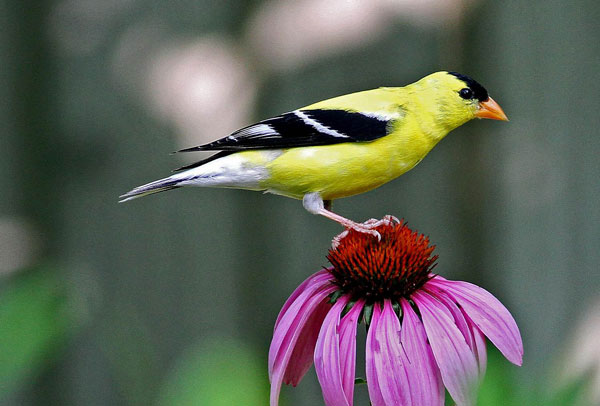
By Linda Wiggen Kraft
For most of us, we plant trees, shrubs and other plants to bring birds, insects and other life into our gardens. But often we don’t know specifically what matches there are between plant and animal that make up the community of our gardens. Little did I know about how many birds are attracted to the plants in my garden.
The Audubon Society has created an interactive website that lets us know what matches there are between birds to trees, shrubs and other native plants. On the home page of Audubon.org there is a section titled, “Help Birds with Native Plants, Search our database to find native plants for your zip code”. Click on that and a page appears that says, “Bring more birds to your home with native plants”. A zip code typed in will take you to a page to find the matches of trees, shrubs, perennials and annuals to specific birds. Not required on the page asking for zip code is an opportunity to put in your email to get a email list of the plants and to help the Audubon Society’s effort to get 1 million plants for birds planted.
Once a zip code is enter a search takes only a few seconds to show the results of “best results” with a number showing how many best matches there are, then “full results” showing a larger number of native plants that may not be as easily available, then “local resources” which lists the local Audubon chapters, other organizations and places to buy these plants. The last tab is “next step” where you can share on social media, let the Audubon Society know how many native plants you planted and purchase a garden sign stating “Plants for the Birds” with more information about your garden.
The database of this site is extensive and gives information about each specific plant in terms of what it offers. A search can be done by type of plant. The plants are listed alphabetically with common names but also identified with botanical names. Each plant is identified as a tree (evergreen or not), shrub, perennial/annual, vine or grass. Then it is identified with what it offers with nectar, fruit, nuts, seeds, caterpillars or butterflies.
Birds need the protein of caterpillars to feed their young in the spring. The best part of the website is the match of specific plants to specific birds. For example our native flowering dogwood (cornus florida) attracts wood warblers, mockingbirds and thrasers, orioles, nuthatches, vireos, woodpeckers, cardinals and grosbeaks, crows and jays, and waxwings. A “weed” that grows behind my back fence that I would have pulled out before looking at this website is American Pokeweed. It is a perennial that provides food for migrating birds in the fall. It attracts finches, cardinals and grosbeaks, mockingbirds and thrasers, orioles, waxwings, sparrow, crow and jays, thrushes, chickadees and titmice.
In my list there are 117 best choices of plants and 408 full results. These are lists I will be studying more carefully and choosing plants to match the birds of the local garden community with the plants they need.
Linda Wiggen Kraft is a landscape designer who creates holistic and organic gardens. She is also a mandala artist and workshop leader. Visit her blog: CreativityForTheSoul.com/blog or on her website: CreativityForTheSoul.com. Call her at (314) 504-4266.


